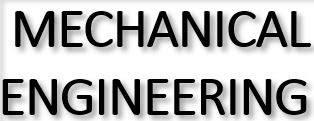Hi guys in this article we learn the topic Shell Mould Casting Process - Definition, Advantages and Disadvantages it is important topic in casting processes so without wasting of time let's see,
Shell Mould Casting Process - Definition, Advantages and Disadvantages
Definition - Shell mould casting process also known as Croning or C-process make use of moulds made of relatively thin shells about 6 mm thick for casting.
The shells are made from clay free silica sand 60-140 AFS fineness mixed 3 to 10 % by weight of the phenolic thermosetting resins like phenol formaldehyde or urea formaldehyde.
The resin may be used in the powder form or may be mixed with the liquid form and then dried on the sand grains. The mixture should be free flowing.
Sometimes about 50% of kerosene is added in dry mixtures and mulled to avoid dusting and loss of binder during operation.
 |
| Shell Mould Casting Process - Definition, Advantages and Disadvantages |
1) Sand resin mixture is invested on pattern heated to a temperature 200 to 400 degree Celsius for period 20 to 50 seconds. During this period the sand mixture around the pattern partially sets to a thickness of 7 to 15 mm depending upon the dwell period and the type of mixture. fig (a)
2) Unset sand is removed and the partially sets shell sticking onto the pattern cured at temperature of 250 to 350 degree Celsius for a period of 1 to 3 minute depending upon pattern intricacy and the shell thickness.
3) Cured shell is ejected from the pattern plate using ejector pins on the pattern. To aid in shell stripping a suitable releasing agent like silicon solution is applied on heated pattern before investing the mould mixture. Fig (b)
4) The ejected mould parts are assembled with cores and clamped together with pouring. The assembled mould may be backed up by the sand. fig(c)
The investment of mould mixture is done either by blowing on to pattern on dumping the mixture on the pattern.
Blowing is more often used in manufacturer of shell core and the dumping method in the manufacture of s shell moulds.
In the dumping method, the heated pattern plate is inverted placing on a box filled partially with the mould mixture. The entire assembly of pattern plate and the box inverted to dump the mixture on the pattern plate.
After the dwell period, box is brought back to upright position to dump unused mixture back into the box. Pattern plate along with sticking partially set shell is sent in for the curing. The steps in dump method can be easily adapted for the mechanization. Modern shell moulding machines have been designed for complete cycle of investment dumping back of unset excess sand curing and the ejection automatically.
Advantages of shell Moulding
1)Good surface finish of the order 3 microns RMS and close dimensional tolerances on the order of 0.003 mm easily obtained.
2) Dimensions across parting surface can be held within 0.1 mm per mm.
3) The moulds are highly permeable completely eliminating gas problems.
4) Resin binder in mould and core completely burns due to heat of the poured metal leaving only loose sand with the casting which is easily cleaned. This simplified shake out and cleaning operations.
5) The process reduces tendency for the section variation in castings compared to green sand mould.
6) Less skill required from the operators.
7) It also give good surface finish and dimensional accuracy reducing machining allowance.
8) It is adaptable to mechanization and mass production.
9) Less sand is used reduce disposal problem.
10) Sand can be recovered for reuse in large plants.
11) The casting sections with good details can be cast.
12) The shell and cores are very light to handle and can be stored away for the later use.
13) The process is used for manufacturer of cams pistons, pistons ring, small pulleys motor housings, fan blades etc.
Disadvantages of Shell Moulding
1) The main disadvantages of this process include the high initial cost of the metal pattern plates.
2) High cost of binder and the limitation of the size of the casting.
3) Tooling cost is high.
4) Cycle time require for shell process is more.
So in this article we learn Shell Mould Casting Process - Definition, Advantages and Disadvantages Hope you understand best.
Any queries regarding this article comments below. Thanks for reading 🙏.


.jpg)



